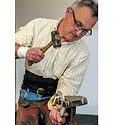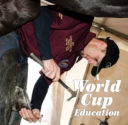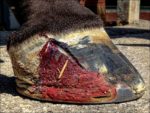Advertise Follow Us
Articles Tagged with ''Jumpers''
Shoeing for a Living
Tennessee farrier Billy Lampley has adjusted his practice, while remaining committed to “keeping things simple”
Read More
Upper Body Straightness is Key to Jumper Success
Wisconsin farrier relies on rockers and a two-plane approach to trim
Read More
Free eGuide
Strategies for Keeping Hunters and Jumpers Working
Immerse yourself in valuable practices to improve your work with equine athletes.
Read More
Show Jumper Shoeing In Norway
Farrier Aksel Vibe shares some thoughts on uncomplicated work while shoeing two jumpers
Read More
A World Cup Education
Jason Critton’s farrier team embraces the chance to learn from some of the best at the FEI jumping and dressage finals
Read More
Matching the Shoe to the Job
Experienced farriers say the choice should be based on a number of factors, many of which have nothing to do with the shoe itself
Read More
Farriers Sweat The Small Stuff To Keep Performance Horses Competing
Sore feet, abscesses occur regardless of discipline and require quick and effective hoof care
Read More
Taking The Time With Each Horse
Decades into his farrier career, Drew Golden still looks for every opportunity to learn from the horse
Read More
What Makes A Good Clip?
Farriers offer critical advice on how to properly apply clipped shoes
Read More
Don’t Let Quarter Cracks Slow Your Clients
Understand the pitfalls for better patching of performance horses
Read More















